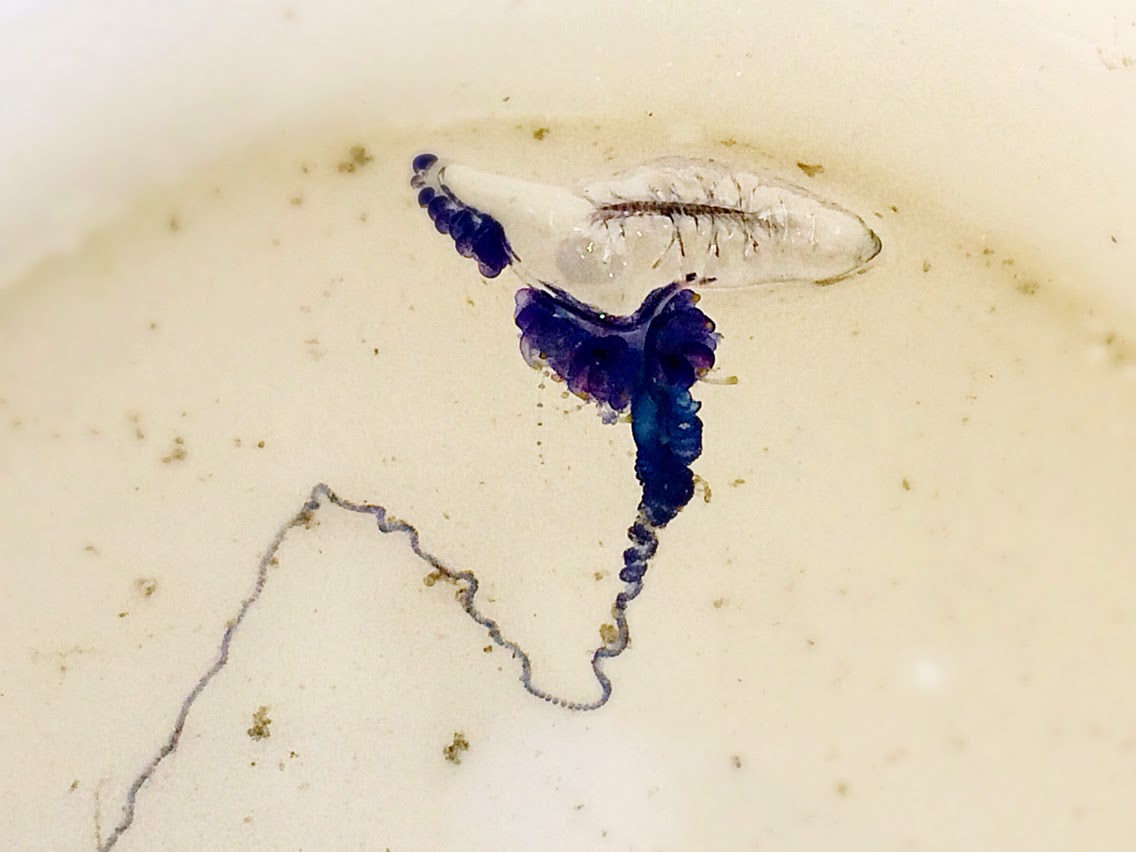Cnidarians
Upside-Down Jellyfish

This fascinating Jellyfish drifts through open waters till it finds protected bays and boat harbors. It then flips upside-down, and sinks to the bottom where it spends its life living on the floor of the ocean. From above they look like beautiful blooming flowers. Whats even stranger about these guys, is they don't have stinging cells on their tentacles like other jellyfish. Instead the stinging cells are contained in a liquid mucous that surrounds the jellyfish. If provoked, the jelly releases this mixture into the water stinging anything around the jellyfish. Unfortunately it is almost impossible to catch these guys without being stung. Lucky the sting is very mild, and can really only sting you in sensitive areas like your palms, face, or feet.
Portuguese Man-of-War
This incredible creature is not a fish, nor a true jellyfish. The venomous cnidarian is actually a kind of symbiotic relationship between several different animals that come together to form "one organism" The inflated sac of gas at the top is one organism, and helps the animal float, and catch gusts of wind to move about. The long tentacle hanging down is another organism, responsible for grabbing its prey and pulling up to the feeding tentacles. think of it as a sort of fishing pole. The rest of the animal is made up another kind of organism responsible for just about everything else, including the digestion of the prey. All of the organisms in this colony share the catch by means of shared digestive tubes that develop after the animal is formed. This specimen here was very small, but adults have been known to have tentacles over 30 feet long!! This animal can deliver an extremely painful sting.
Swimming Anemone
This anemone was found in the sandy shallow waters off the East coast of Hawaii. Common in these conditions, they get there name from their ability to lift off the substrate and swim through the water to escape predation. These anemones are pretty small and normaly obtain about 1.5 inches in diameter, but have been been reported to reach up to 6 inches.
MANN'S ANEMONE
This large anemone are not seen very often, as they are found deep in crevises and cracks of breaker walls and rocky shores around Hawaii. So far, this species has only been described here. The anemone is covered with tiny bumps, and ranges in color from dark brown and green, to a brilliant firery red color.





No comments:
Post a Comment